Irish Brown Bread
As an amazon associate I earn from qualifying purchases.
This easy Irish brown bread recipe puts a hearty, nutty homemade loaf on your table in no time! Authentic recipe, straight from Connemara.
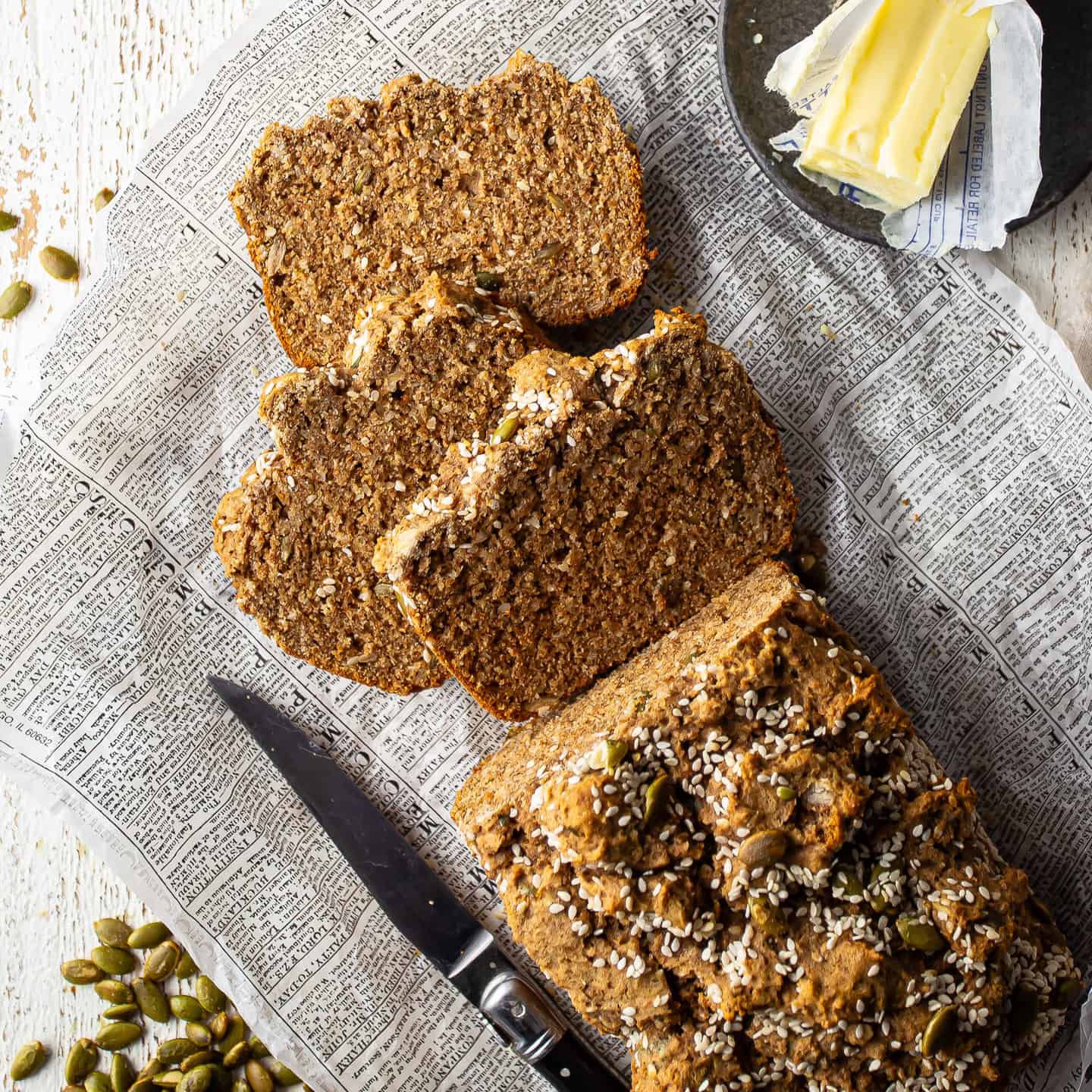
A few years back, I had the privilege of visiting Ireland for a whirlwind tour that focused on my favorite subject: food! It was a truly unforgettable experience, and I’m still working to share everything I learned about Irish cooking with you, years later.
Today I’m going to teach you how to make Irish brown bread.
I thought it was kind of funny how everyplace we went, everyone was so proud of their Irish brown bread recipe. They couldn’t wait to share! And so many would say “You MUST try our brown bread. It’s the specialty!”
They were all so good. But for today’s post I have adapted the recipe I received from the wonderfully charming people I met at Kylemore Abbey in Connemara, which is in County Galway.
It bakes up wonderfully nutty and flavorful, with a moist interior and a hearty crust. It’s loaded with healthy whole grains and seeds, and I think you’re going to love how easy it is to make.
For more authentic Irish recipes, be sure to have a look at my cheesy Colcannon, my Irish apple tart, and my Irish scones.
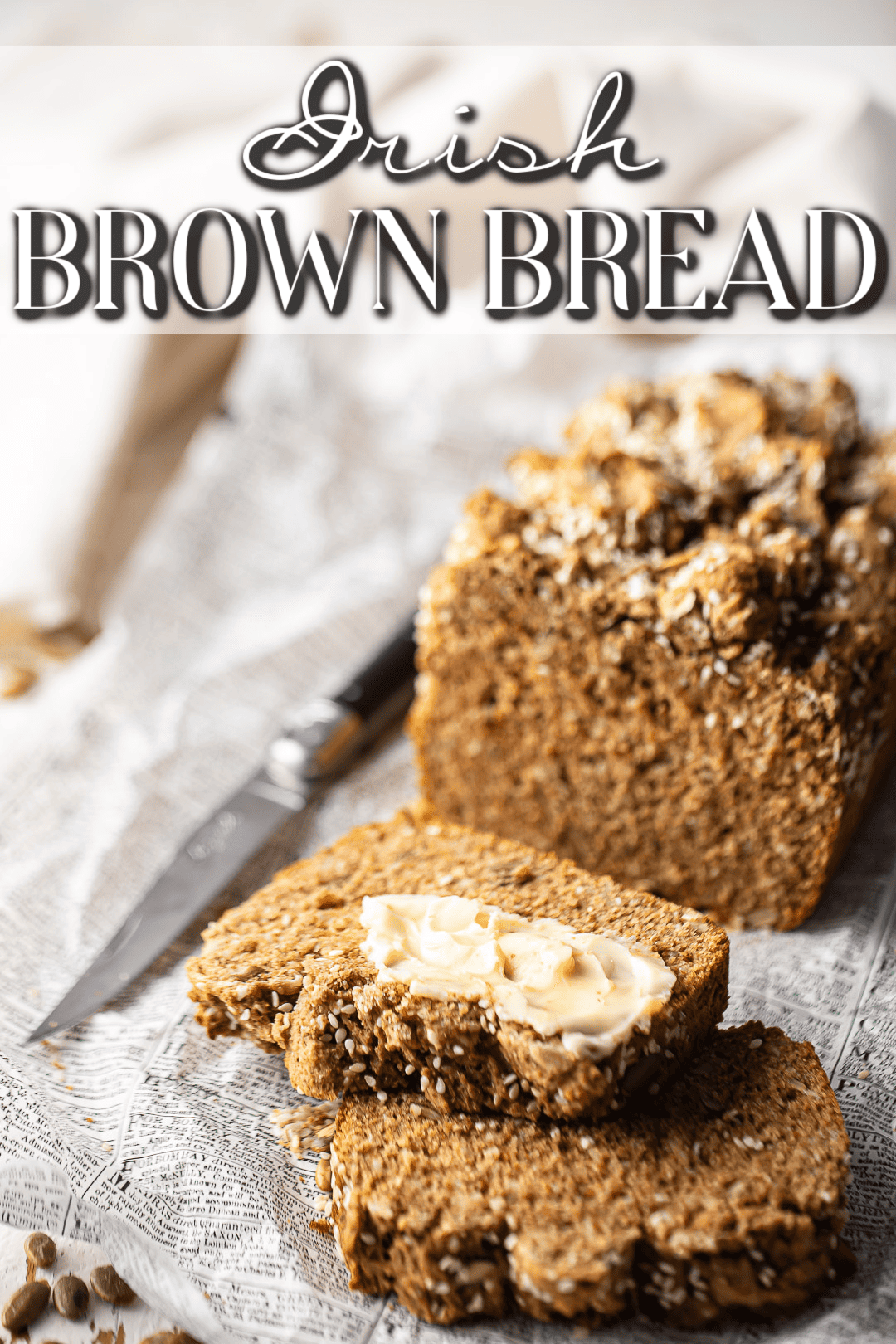
Table of Contents
- What is Irish brown bread?
- Why this is the best Irish brown bread recipe
- What does it taste like?
- Ingredients
- Special equipment
- How to make Irish brown soda bread
- How to serve Irish brown bread
- Expert tips
- Frequently asked questions
- A few more of my best Irish recipes
What is Irish brown bread?
This is a quick bread, which means not only is it made in not a lot of time, but also that it is leavened with baking soda instead of yeast. Quick breads also follow a specific method of first combining the dry ingredients, then mixing in the liquids before baking.
Irish brown bread is made from a mixture of whole grains, seeds, and buttermilk, for a crusty loaf that’s really hearty and flavorful.
Why this is the best Irish brown bread recipe
- Tastes amazing: This bakes up with a nutty, slightly sweet flavor that’s completely irresisitible!
- Few ingredients: You’ll only need a handful of items to make it.
- Easy to make: Seriously, I’m talking just 15 minutes of active time!
- Authentic: This Irish brown bread recipe comes straight from Ireland!
What does it taste like?
Irish brown bread is very moist in the center, almost like a muffin but not nearly as sweet. On the outside edges, it’s really crusty and crumbly.
The flavor is savory with just a hint of bitter sweetness from the molasses. The whole grains and seeds come together to produce a really hearty, nutty flavor that complements just about anything you serve it with.
Ingredients
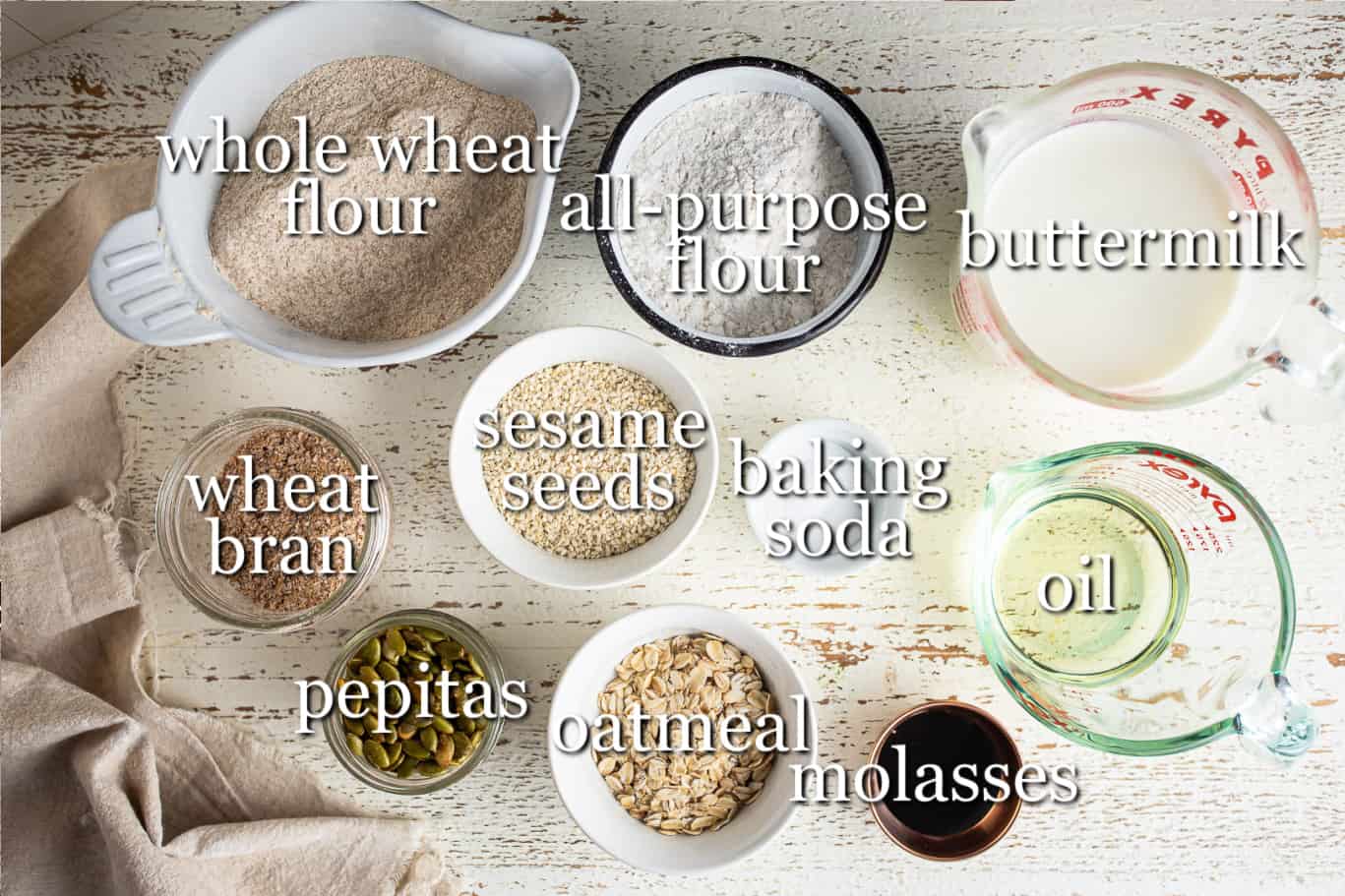
Flour: You’ll need a combination of whole wheat flour and all-purpose flour to create the bread’s structure.
Seeds: Sesame seeds and pepitas (aka: shelled, roasted pumpkin seeds) add to the nutty appeal.
Bran: Wheat bran adds nutrition and fiber, and contributes to the hearty texture of this loaf.
Oatmeal: I used old-fashioned oats for a really nice, chewy texture, but quick oats will work in a pinch.
Baking soda: Baking soda allows the bread to rise.
Buttermilk: The natural acidity of buttermilk sets off a chemical reaction with the baking soda, to create millions of little air bubbles that keep the brown bread from being too dense.
Oil: I used vegetable oil, but any neutral-flavored oil that’s liquid at room temperature will work, and will help the bread to be moist and not too dry.
Molasses: Adds a hint of complex sweetness and enhances the naturally brown color of the bread.
Special equipment
- Measuring cups and spoons: Follow my guide on how to measure ingredients.
- Mixing bowl: In which to mix up the dough.
- Silicone spatula: For stirring and folding all the ingredients together.
- Pan: The bread is baked in a standard-sized, 1 1/2-quart loaf pan. I used ovenproof glass. If you use metal instead you may have to adjust the bake time.
How to make Irish brown soda bread
This easy recipe comes together in just 3 simple steps.
Step 1: Combine the dry ingredients
Whole wheat flour, all-purpose flour, wheat bran, oats, baking soda, and most of the seeds can all go into a big bowl.
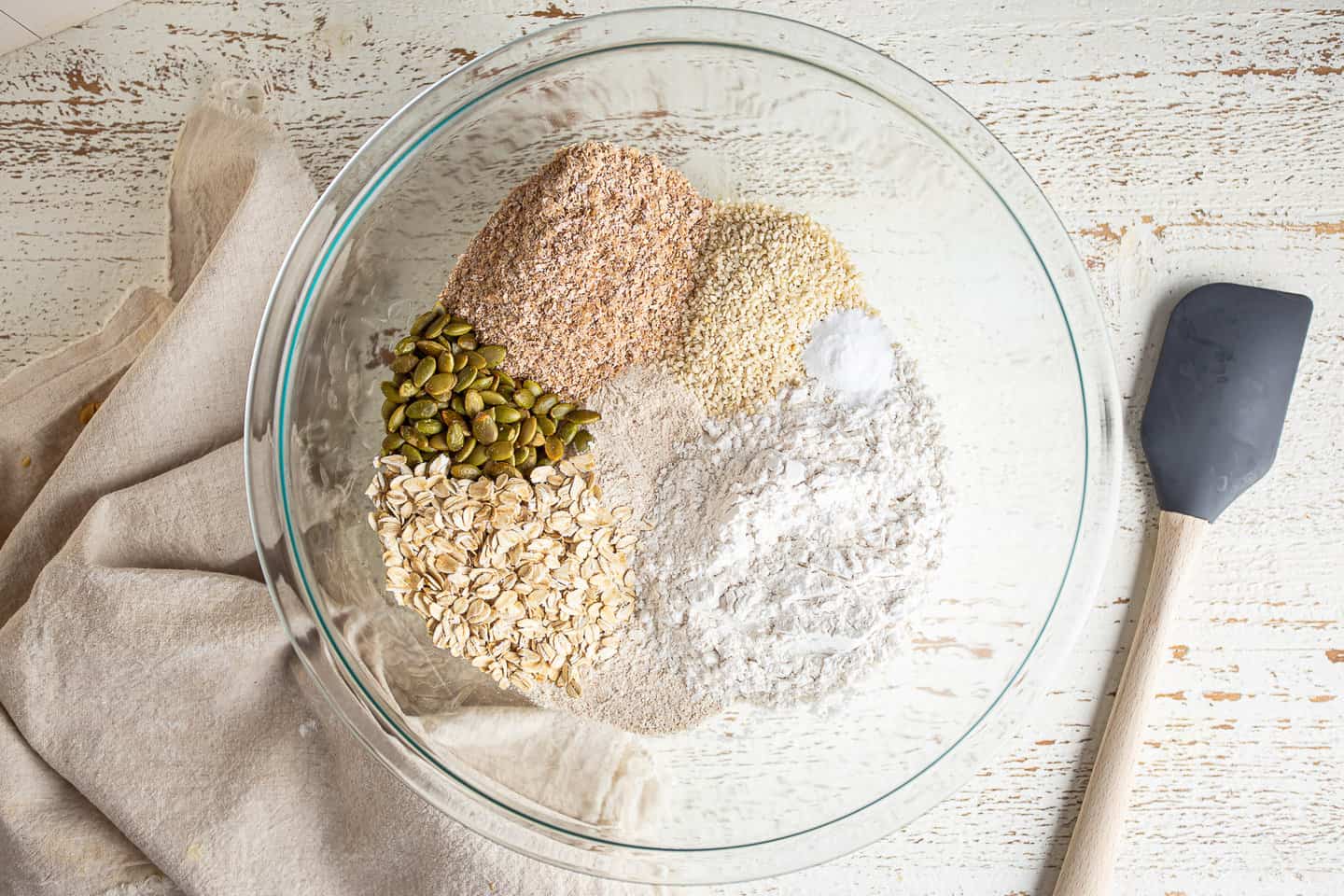
Give them a quick stir, just to get everything combined.
Step 2: Add the liquids
Next, create a well in the center of the dry ingredients.
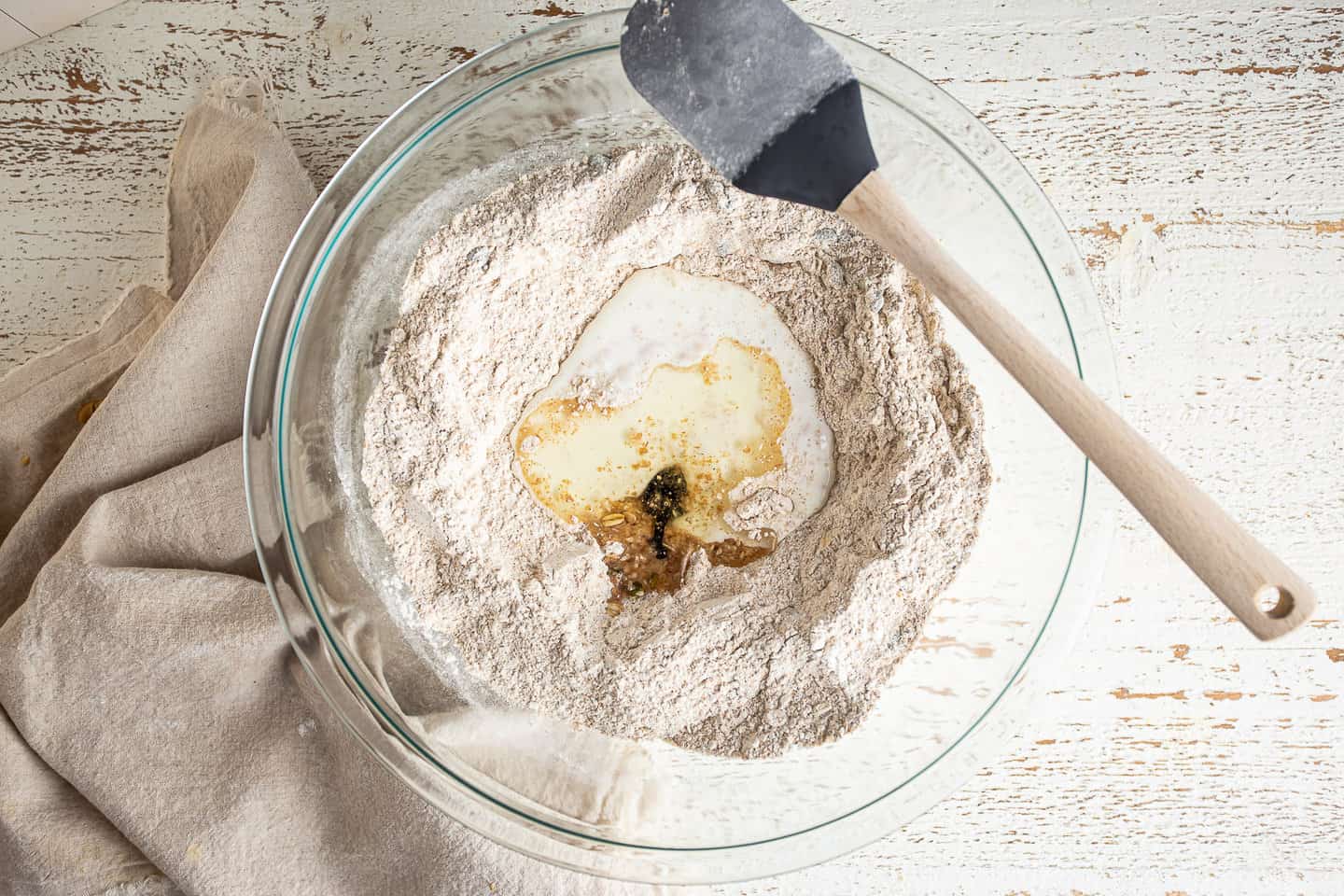
Then pour the buttermilk, oil, and molasses into the well.
Starting from the center and working your way outward, stir everything together, picking up the dry ingredients as you go and working them into the mixture.
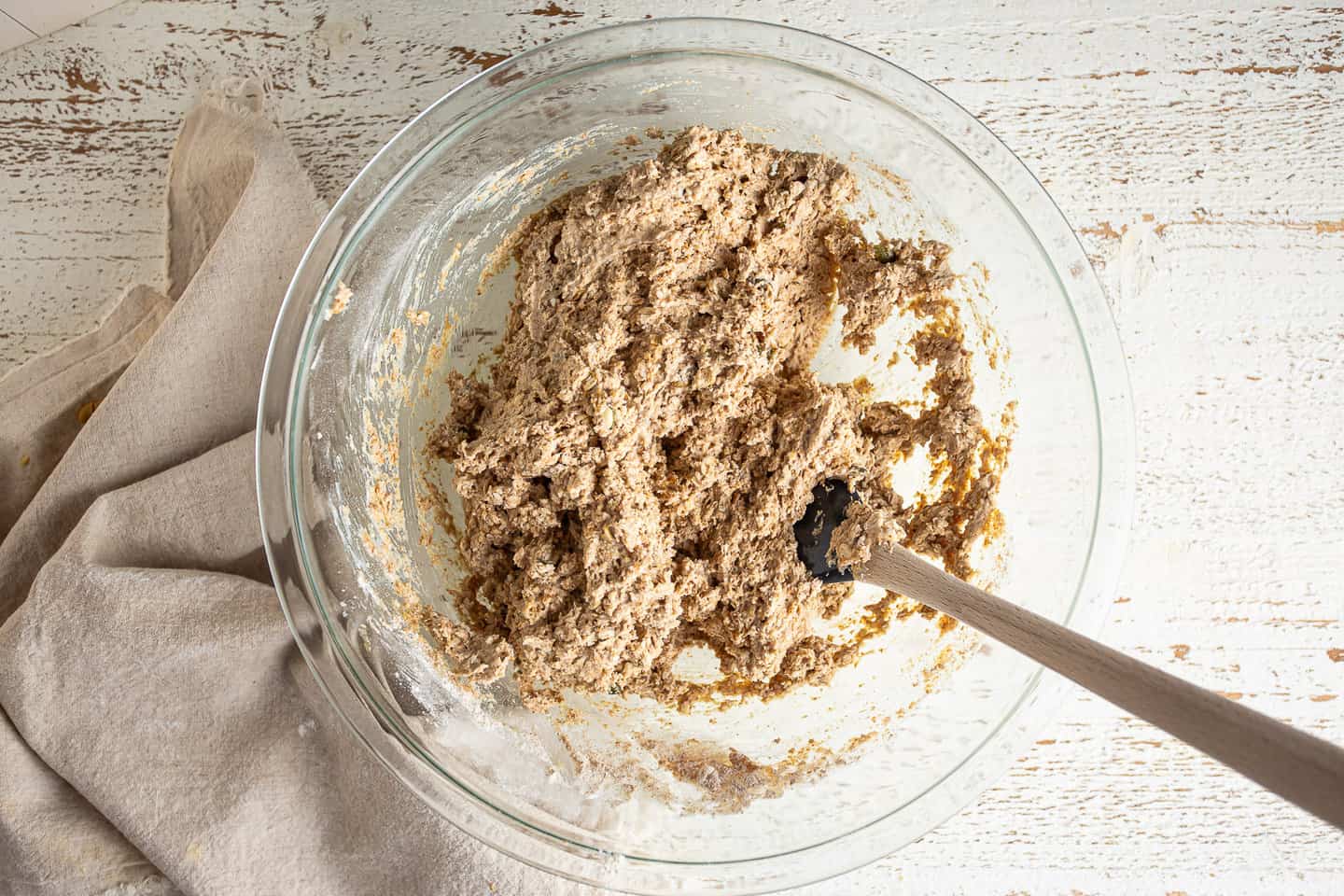
You should end up with a stiff, sticky dough.
Step 3: Bake
Transfer this dough to your loaf pan, and top it with the remaining sesame seeds and pepitas.
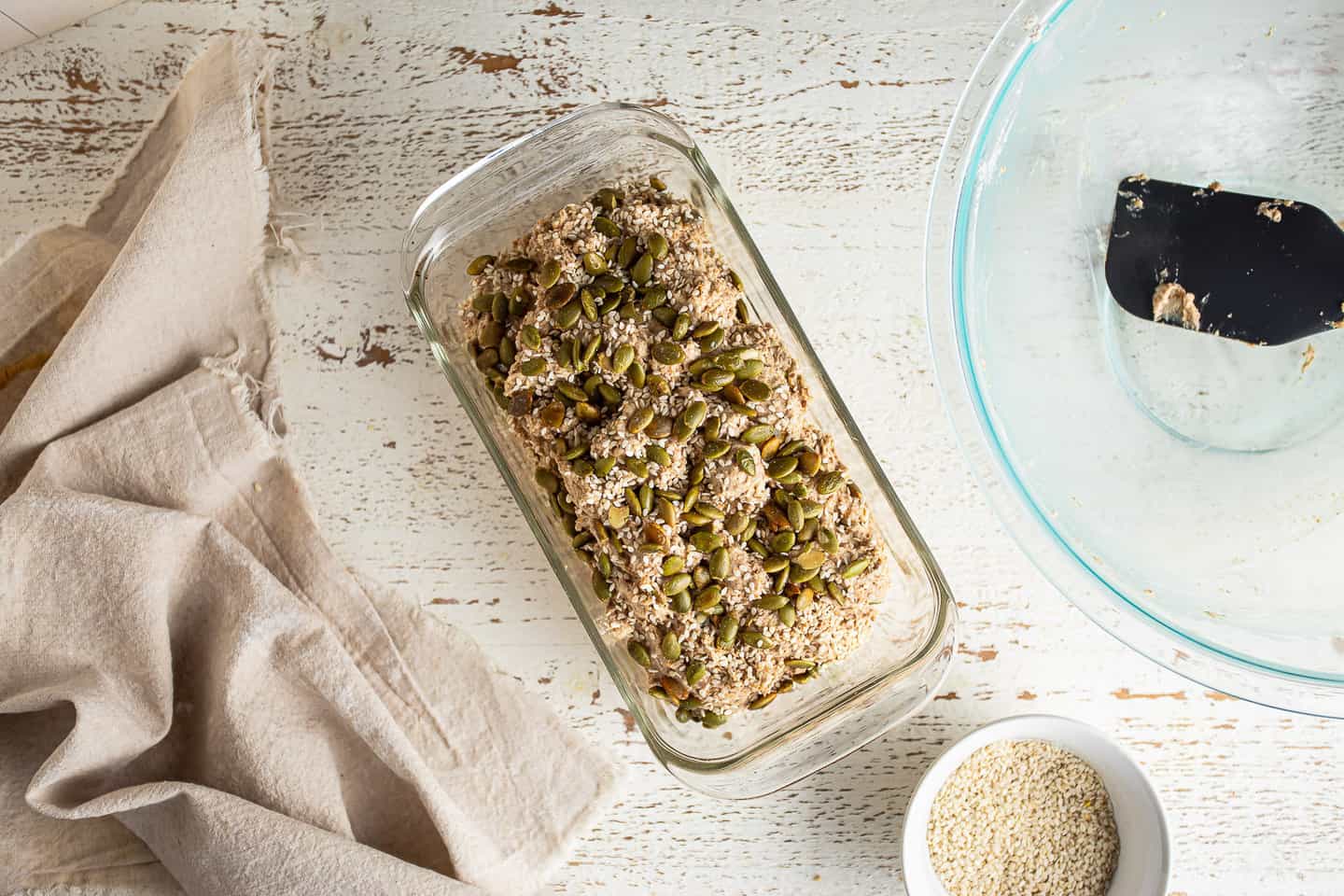
It will bake in a pre-heated oven until it’s puffed and crusty. It should register an internal temperature of around 195 degrees F.
How to serve Irish brown bread
This bread is absolutely fantastic still warm from the oven, with a liberal smear of soft butter. If you can get your hands on Irish butter, all the better! Irish butter is really flavorful and higher in butterfat than most American products, so it has a really rich taste like nothing else. I’d sprinkle on a little sea salt too!
In Ireland, brown bread was served at pretty much every meal. It was sometimes topped with smoked salmon (so good!). I especially enjoyed it alongside some of the steaming bowls of hearty soups and stews that were frequently on offer.
Expert tips
Use whole milk buttermilk: It’s sometimes a little harder to find, but if you can get your hands on whole milk buttermilk it will really provide the richest flavor.
Don’t overmix: Be careful not to overmix the dough or your bread could come out tough.
Don’t overbake: Start checking your Irish brown bread about 10 minutes before you expect it to be done. If it stays in the oven for too long, it could become dry.
Freeze leftover ingredients: Ingredients like whole wheat flour, bran, and seeds contain a lot of really volatile fats that spoil quickly. You’ll know they’re bad by the smell. Keeping them in airtight containers in the freezer will extend their shelf life.

Frequently asked questions
If you can’t find buttermilk, a reasonable facsimile can be made by stirring about 1 3/4 tablespoons of white vinegar or lemon juice into 1 3/4 cups of regular milk. Allow it to stand for about 5 minutes and thicken up.
Yes! Irish brown bread can be made several days ahead and kept at room temperature. I like to loosely cover it, so the inside stays moist but the crust doesn’t go soggy.
To extend its life, keep any leftovers in the fridge or freezer. This bread should last a week or so in the fridge, and a couple of months in the freezer. Thaw it at room temperature and reheat it for a few seconds in the microwave or (wrapped in foil) in a 170-degree oven until warmed through.
You can slice this bread as thick or as thin as you like. The recipe makes one loaf.
The nutritional info below is for the whole loaf. You can divide it out by how many slices you cut it into. It’s for the bread only, it doesn’t include any toppings such as butter.
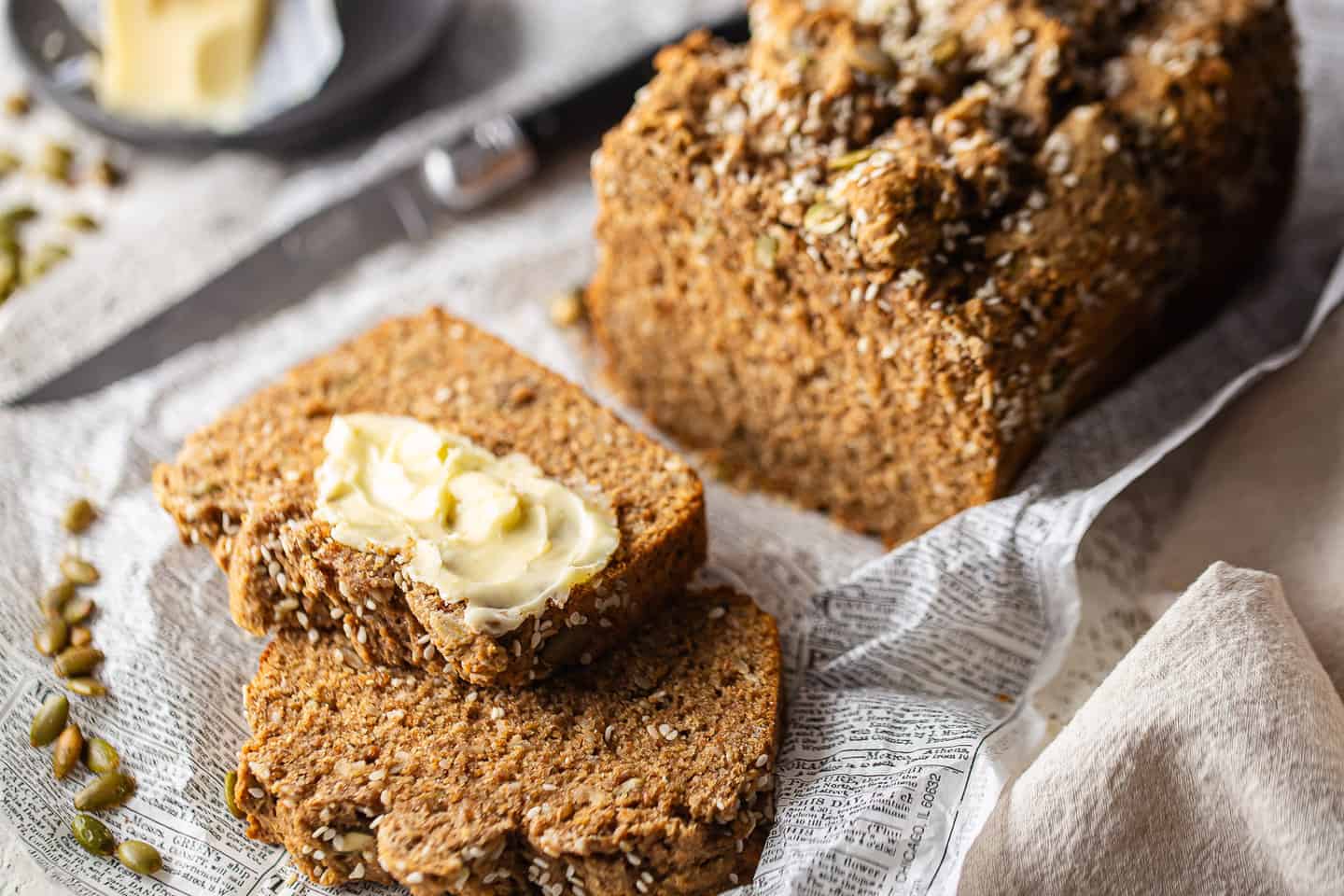
A few more of my best Irish recipes
As an amazon associate I earn from qualifying purchases.
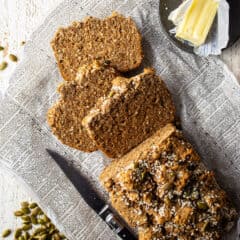
Irish Brown Bread
Ingredients
- 1 3/4 cups (210 g) whole wheat flour
- 1 cup (125 g) all-purpose flour
- 1/2 cup (75 g) sesame seeds, divided
- 1/3 cup (21.33 g) pepitas, divided
- 1/3 cup (19.33 g) wheat bran
- 1/4 cup (58.33 g) oatmeal
- 1 teaspoon (4 g) baking soda
- 1 3/4 cup (420 g) buttermilk
- 1/2 cup (112 g) oil
- 2 teaspoons (14 g) molasses
Instructions
- Preheat the oven to 350 degrees F.
- Place the whole wheat flour, all-purpose flour, about 2/3 of the sesame seeds and pepitas, the wheat bran, oatmeal, and baking soda in a large mixing bowl and stir to combine.
- Create a well in the center of the dry ingredients and pour in the buttermilk, oil, and molasses.
- Fold all the ingredients together until you have a stiff dough.
- Transfer the dough to a standard-sized loaf pan and top it with the remaining sesame seeds and pepitas.
- Bake the bread until it's very crusty and registers an internal temperature of around 195 degrees F (approx. 1 hour).



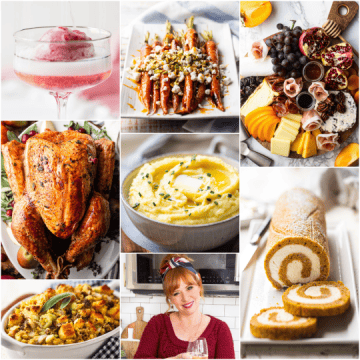





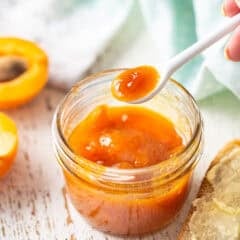


Kylemore is a beautiful place! Thank you for sharing this recipe.
The bread is very easy to make and has a good taste. I think there should be some salt however. I put in a pinch but it needs more, perhaps 1/2 tsp. I will also in the future put less sesame seeds on the top and push them down a little as most fall off when I am cutting the slices. As it was, I used less than the recommended amount on the top.
I used King Arthur whole wheat flour which is much finer than that used in Ireland. There the brown flour used is typically coarse brown flour. While I liked this and will make it again, the coarse brown flour adds so much to the taste and enjoyment. Sigh!
Thank you so much for the good feedback! I like your suggestions!